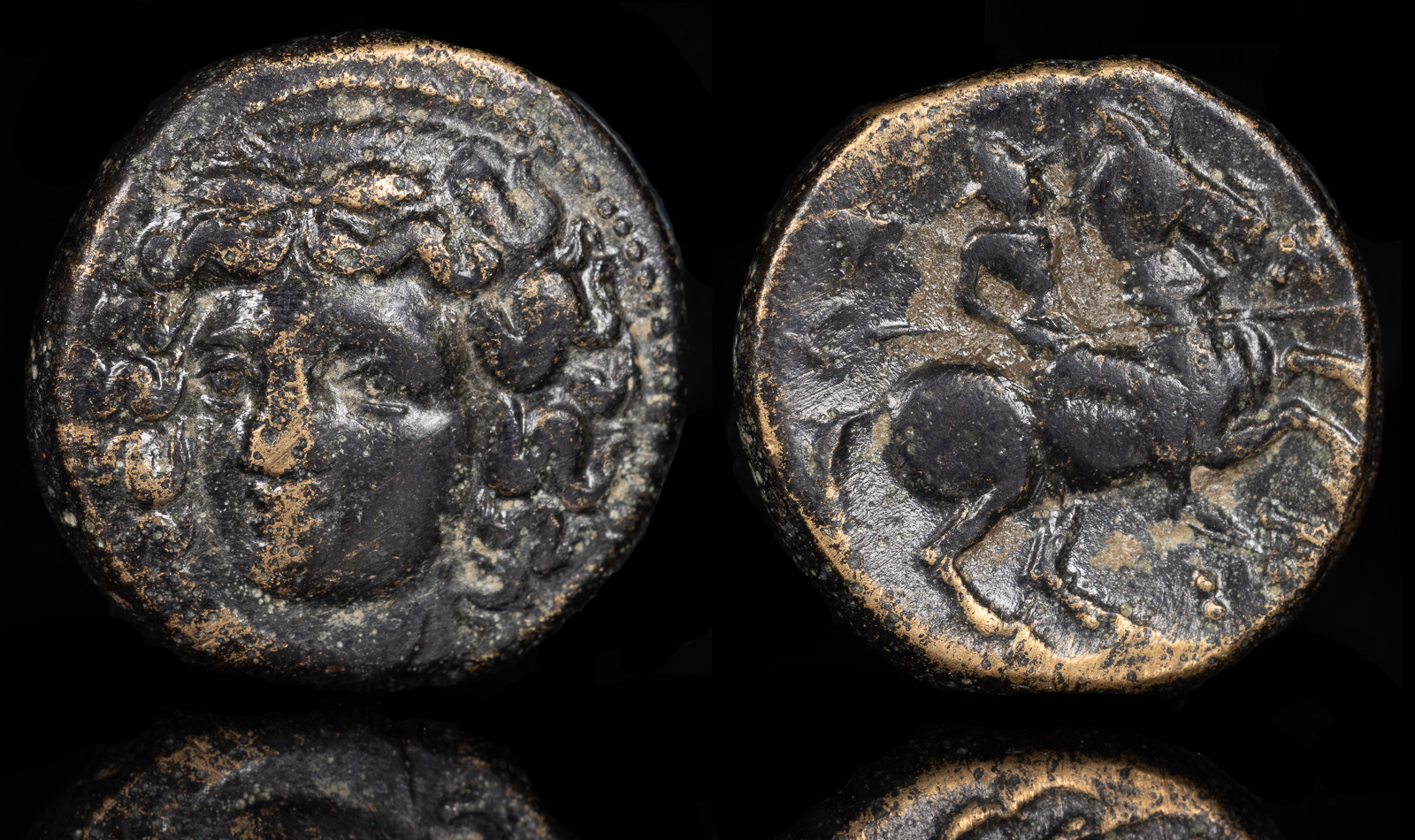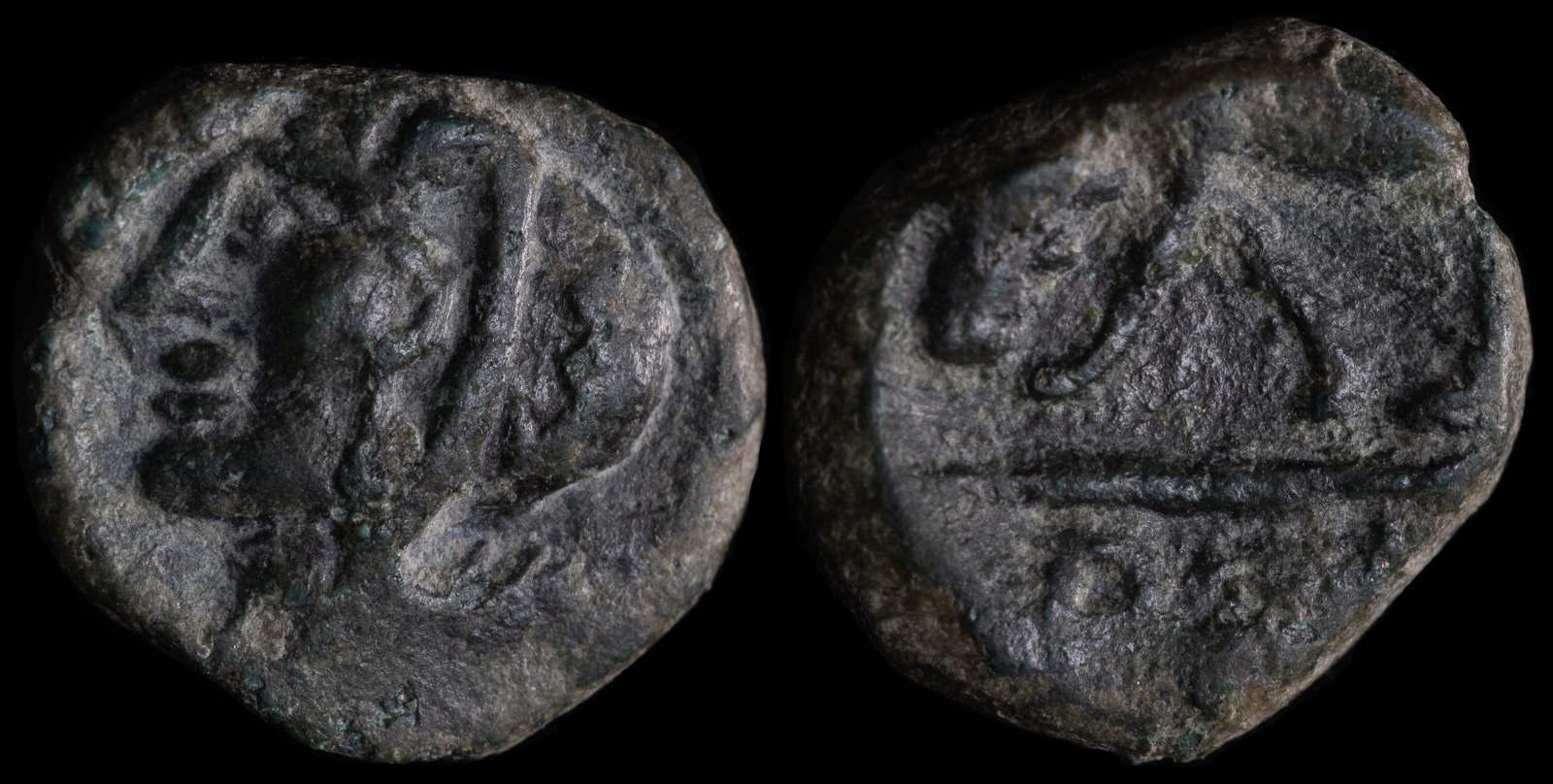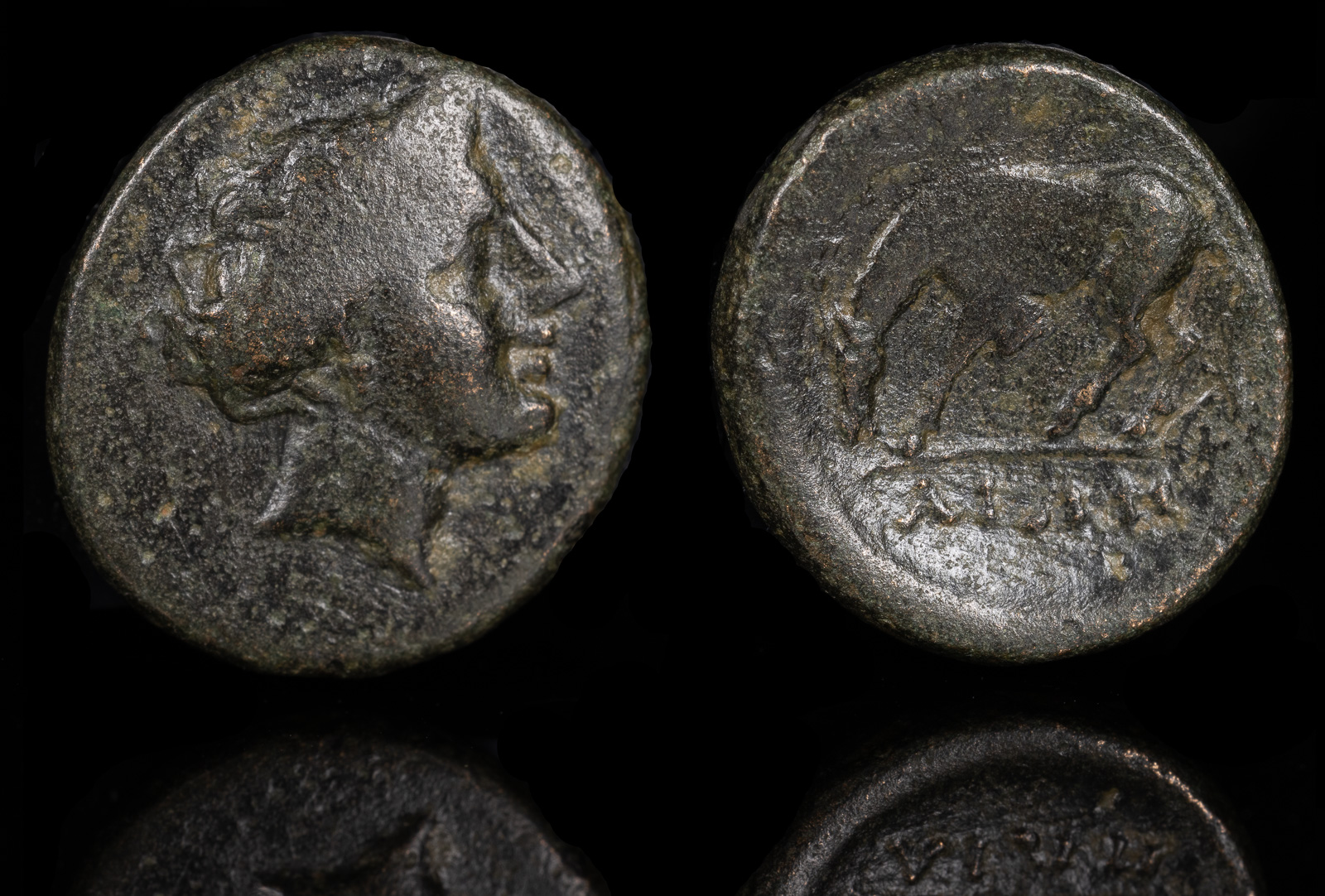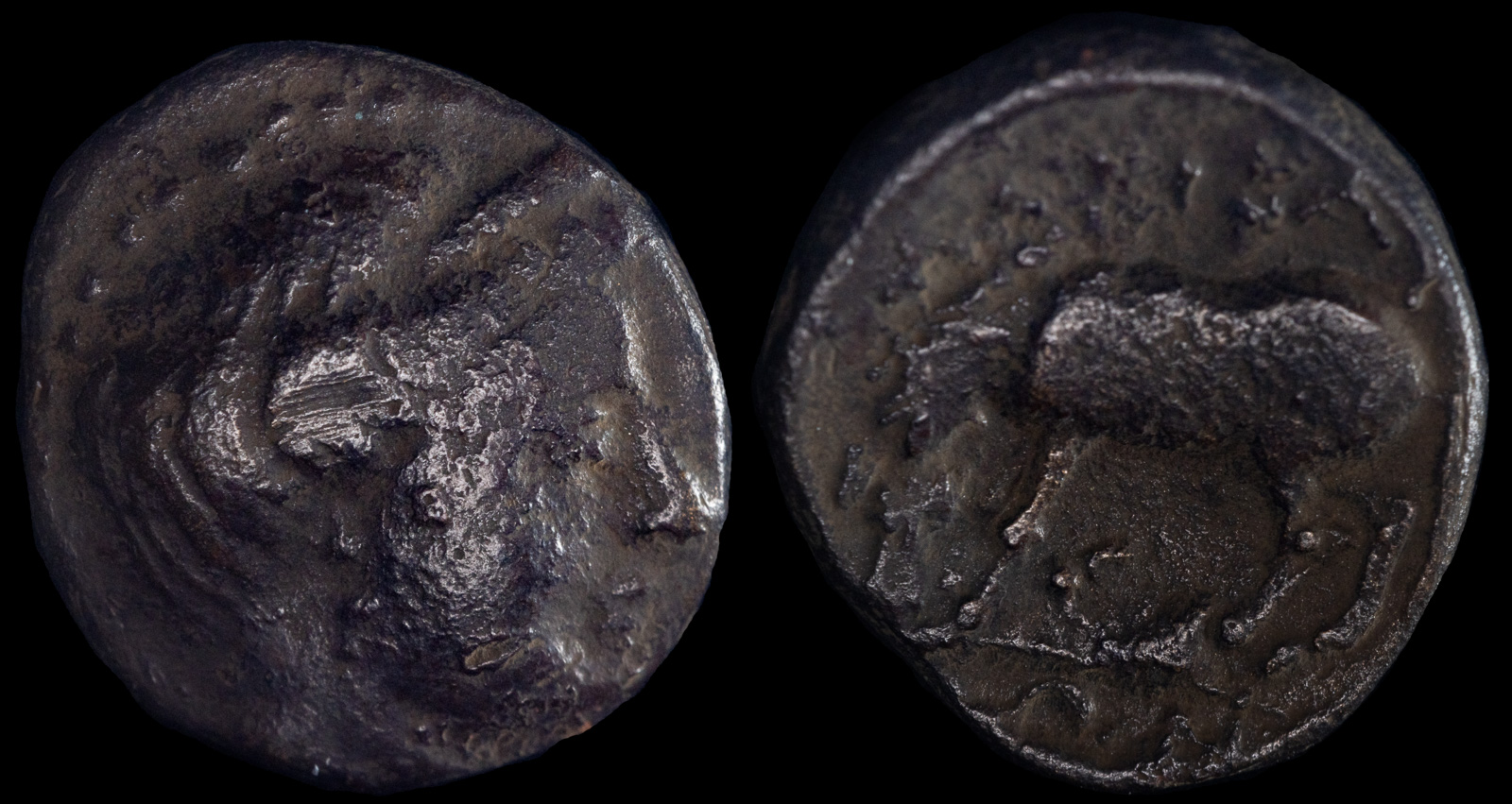
4th century BCE
17.75mm 4.28g
Obverse: Head of the nymph Larissa right
Reverse: ΛΑΡI-ΣAIΩN, horse standing right, preparing to roll
Attribution: Rogers 288; BCD Thessaly II 390.4
Ex BCD Collection
Larissa was one of the first cities on my list because it was the birthplace of Philinna, who was one of Philip II’s wives and the mother of Philip Arrhidaeus. Philip married her in order to form an alliance with the Aleuadae family, which was one of the most powerful in Larissa.

circa 380-337 BCE
Æ 12mm, 1,76g
Head of the nymph Larissa left /
Horse standing right, about to roll
Rogers 301
Philip was actually Philinna’s second marriage. Although we don’t know what happened to her first husband, she had a son named Amphilakos with him, who was given the satrapy of Mesopatamia after Alexander’s death. Therefore, although she was later slandered as a dancing girl or whore, it’s clear that she must have come from a considerably powerful family.

4th Century BCE
AE 17.29mm 6.48g
Obverse: Head of the nymph Larissa facing slightly left, with hair in ampyx
Reverse: ΛΑΡΙ-Σ-AΙΩΝ, warrior on horseback trotting right, grain ear below
Attribution: Rogers 279; BCD Thessaly II 387.5
Ex BCD collection Purchased October 1994
Ex Marc Breitsprecher
Larissa itself was founded by Akrisios in mythology. He was accidentally killed by his son Perseus, who struck him on the head with a discus. Peleus and his son Achilles also lived in Larissa.
During the Peloponnesian War, Larissa sided with Athens, since both cities were democratic. In 344 BCE, it was annexed by Philip II, and remained under Macedonia until Roman times except a brief occupation by Demetrios I Poliorketes in 302 BCE.

circa 4th century BCE
AE 12.2mm, 1.9gms
Obv: Bust left wearing cap
Rev: Horse grazing above. Below -PA-
The modern city of Larissa is the largest in Thessaly and of great importance. Some of the ruins of the ancient city are still visible though.

circa 380-300 BCE
Bronze Æ 15 mm, 2,32 g
Ex Savoca

circa 380-337 BCE
Æ 13mm, 1,78g
Head of the nymph Larissa to right, wearing pendant earring /
Horse standing to left, about to roll; A below front hoof, ΛΑΡΙΣ above, [AΙΩΝ] in exergue
Rogers 296; SNG Copenhagen 144